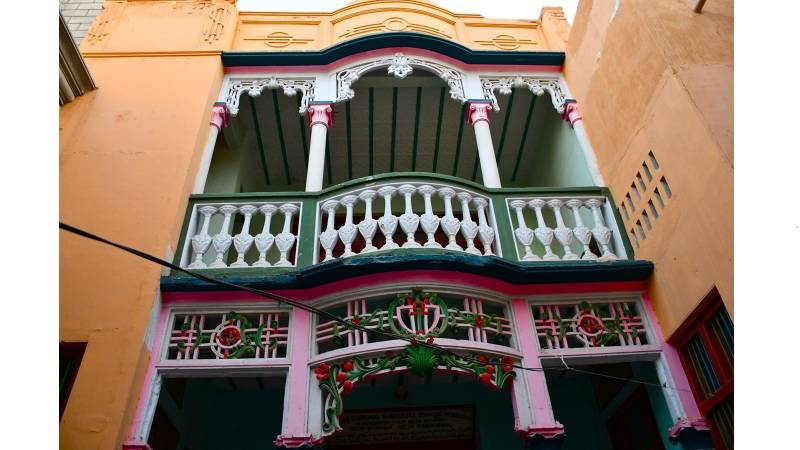
There are many old Hindu temples in Shikarpur City. One such temple is dedicated to Jog Mata and is located at the Chabutra Chowk. This temple may have been built in the 18th century. The old name of Jog Mata Mandir was Gurano Ghar (the house of Gurus), which was surrounded by the havelis of Gurus who managed and maintained the temple. Like many other old temples, this temple of Jog Mata or Jogmaya was noted for its woodwork and donor plaques in Shikarpur City. It was built and managed by Gurus who belonged to the Tomar branch of the Rajput clan.
Giyan Chand Walecha Rajput, who is now the shivadar of the temple, believes that the first guru of the temple was Gur Sahib Sundar Das, who built Pooj Shri Jog Mata temple. It was most probably built in the 18th century. He also shared a few names of Gurus of this temple that he remembers. He told me that Gur Sahib Sundar Das and Gur Sahib Teekam Das were two gurus of this temple. The names of a few other gurus are also written on the donor plaques in the temple. Those donor plaques were written in English, Hindi, Sindhi and Hatvanki. The Hatvanki script was used by Shikarpuri traders for correspondence. A few donor plaques written in the Hatvanki script can still be seen in a few temples and darbars of Shikarpur City.
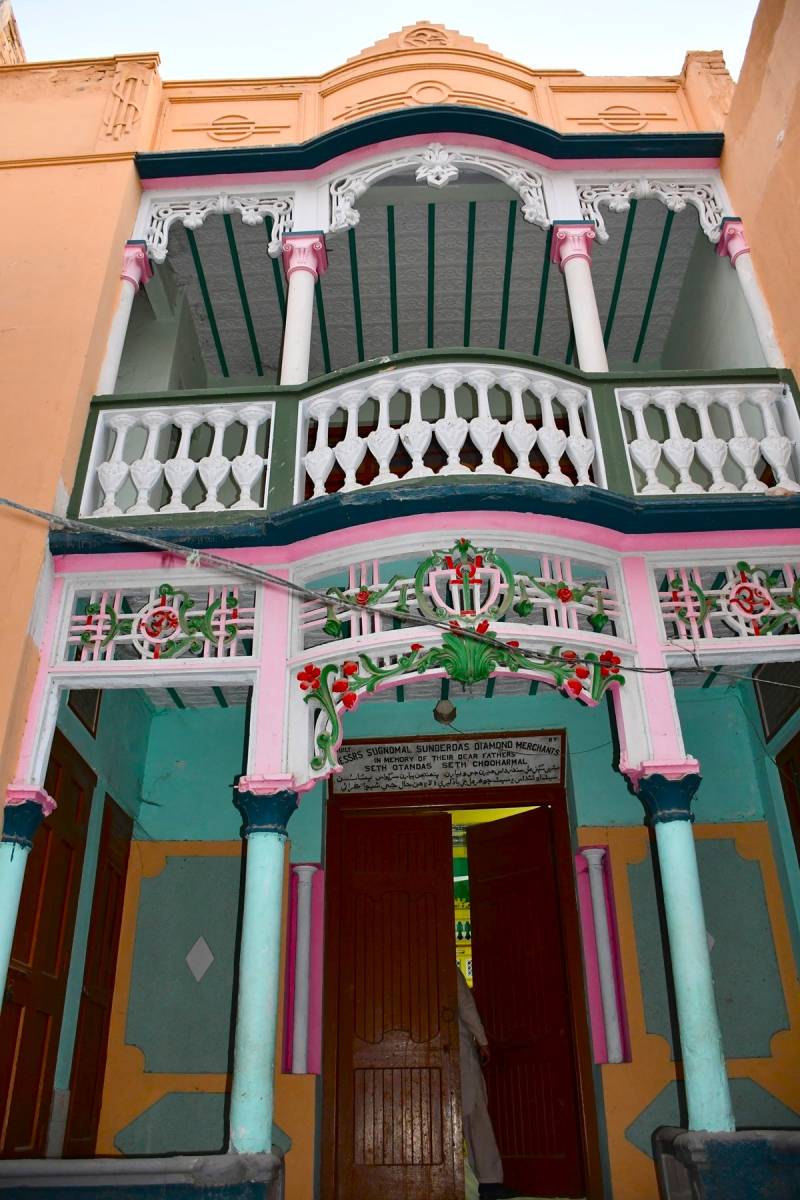
This temple complex houses five asthaans dedicated to Lord Narayan (Vishnu), Shiva, Jog Mata, Jhulelal, and Devi. All the asthaans contain images of the deities.
The temple has undergone renovations quite a few times. Despite renovations, it has retained a few inscribed slabs. There is a donor plaque above the main wooden doorway that opens to a hall, which is called Yagyashala. The inscription is written in English and Sindhi, and tells us that the “hall was built by Messrs Sugnomal Sunderdas Diamond merchants in memory of their dear fathers Seth Otandas Seth Chooharmal.” This hall, called Yagyashala, contains a havan kund or Aghor and two asthaans dedicated to Jhulelal and Narayan Bhagwan respectively. Both images of Jhulelal and Narayan Bhagwan are placed under a small structure that also carries inscriptions in Hindi. As per the inscription, “This temple was built by Puj Gur Sahib Bhagwan Das in memory of Puj Guru Sahib Meghraj Tomar Rajput in 1943.” The name of Gur Sahib Teekam Das is also written in the inscription, who was the Guru of the temple at the time.
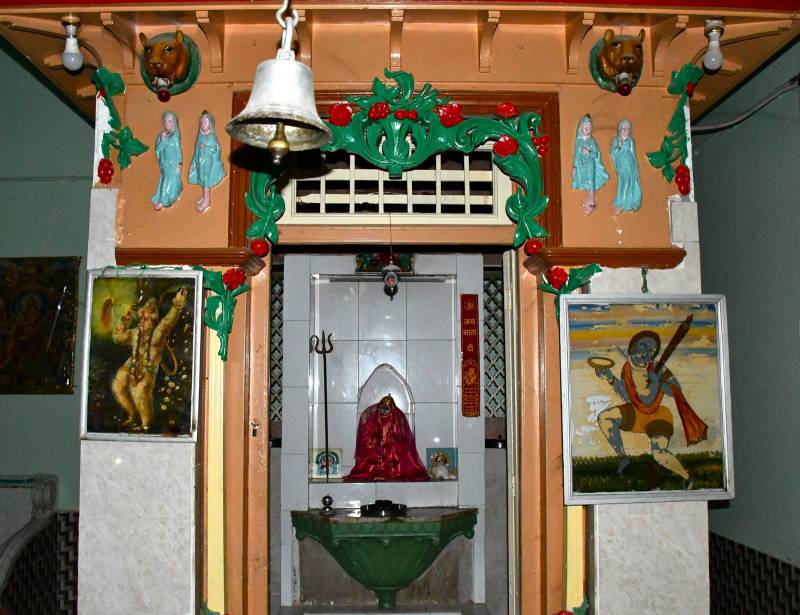
On the right of Yagyashala is another hall. There is also an inscription on the wall of the hall which is written in Hindi and Sindhi. According to the inscription, this famous Puj Shri Jog Mata temple was built by Shrimati Lakshmi Devi in memory of their dear brothers Gur Sahib Gula Ram, Gur Sahib Shiva Ram, Gur Sahib Ramchand, Gur Sahib Ganga Ram, the sons of Puj Gur Sahib Sahibrai Sain Tomar Rajput in 1943. Actually, this donor plaque was fixed when the temple was renovated by Shrimati Lakshmi Devi.
As one enters the hall, one notices the platform (thalo) where the Gurus of the temple used to sit. On the platform are placed pictures of Gur Sahib Dwaraka Das and Gur Sahib Sunder Das not to be confused with the first Gur Sahib Sundar Das who laid the foundation of this temple. Gur Sahib Sundar Das who lived in the twentieth century had eleven brothers. He was the youngest amongst them. The devotees of Gur Sahib Sundar Das used to pay him Rs 1 annually as ‘Guru Dakshina’ which collectively amounted to more than one hundred thousand in pre-partition that was equally distributed among the twelve brothers.
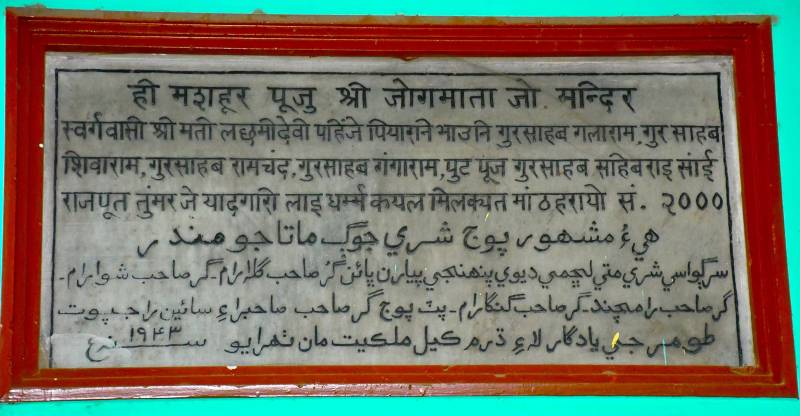
Adjacent to the platform of Gurus is the asthaan of Jog Mata, after whom this temple is named. The image of Jog Mata is placed under a small domed structure. On the left of Jog Mata temple is another asthaan of a Devi, hence it is called Devi-Jo-Asthaan, which is flanked by images of the horses.
Adjacent to Jhulelal asthan is located Shiva asthaan. On one of the steps of the domed structure of Shiva Asthaan is an inscription in Hindi that reads that it was donated in memory of Shri Pesu Mal Vishan Das (also known as Chup Asrani). A wooden door that opens to Kailash or Shiva asthaan is noted for images of Ganesh with his consorts. This is one of the most impressive images of Ganesh in woodwork in any of the temples in Shikarpur. Apart from temples and darbars, the image of Ganesh was also carved on wooden doors of the havelis in Shikarpur. The majority of the doors that depicted Ganesh, that I saw in 1998, 2000, 2001, 2005, and even in 2009 were later removed and sold. Today, not a single doorway of the haveli contains the image of Ganesh which I saw a decade ago!
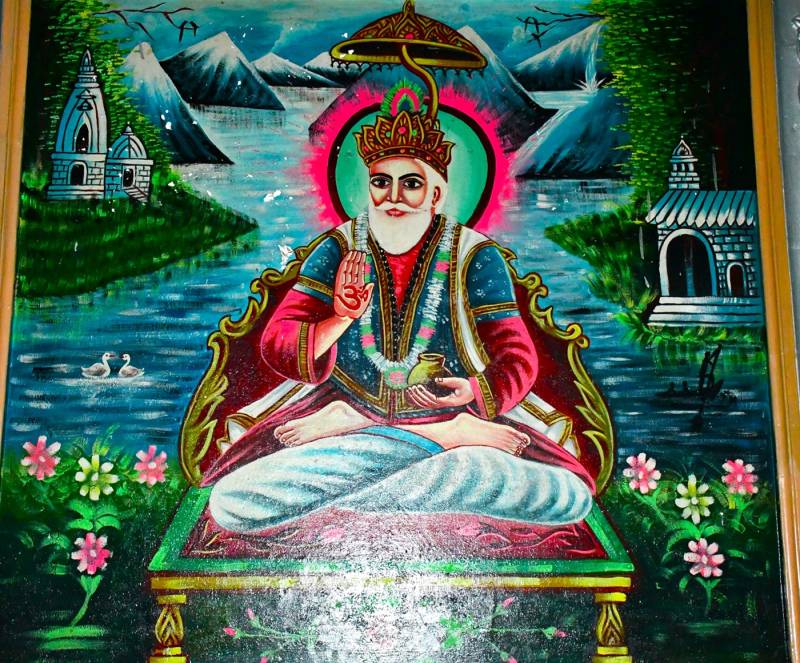
Formerly, the temple had four entrances from different cardinal directions. The eastern entrance used to open to Nandi Bazaar, the western to Kakaran Jo Thalo locality, the southern to the Bajaj street in Kakran Jo Thalo, and the northern to Kakran Jo Thalo locality too. Today only the eastern entrance is functional and all other entrances have been closed.
Once a huge temple complex surrounded by impressive havelis of Gurus is now reduced to only a small temple complex. All the havelis of gurus were taken over by immigrants from India when the families of gurus left for India. These havelis were noted for their intricate woodwork, but it has lost its original beauty and elegance now.
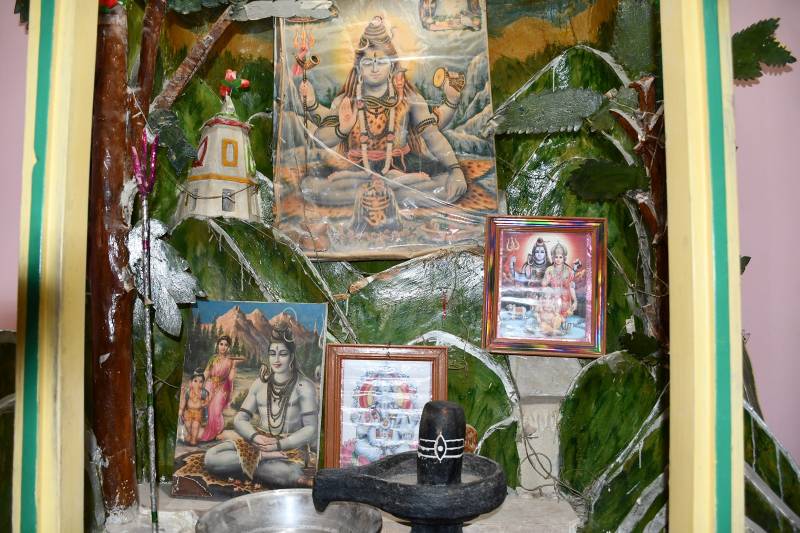
There is another donor plaque in Hindi and Hatvanki on the entrance wall of the temple which bears the name of the donor. As per the inscription, Mohit Das son of Dwaraka Das contributed Rs 501 for Puj Shri Jog Mata Mandir in 1943. Apart from this, there is another donor plaque in Yagyashala that is written in English, Hindi, and Sindhi. It bears that Professor Sugnomal Otandas Bhojwani donated in memory of his beloved son Krishan.
The temple of Jog Mata is one of the few temples in Shikarpur that retains its original donor plaques. These donor plaques are a good source of information about the gurs/gurus who managed and expanded the temple. Their devotees also contributed to the expansion of the temple.

